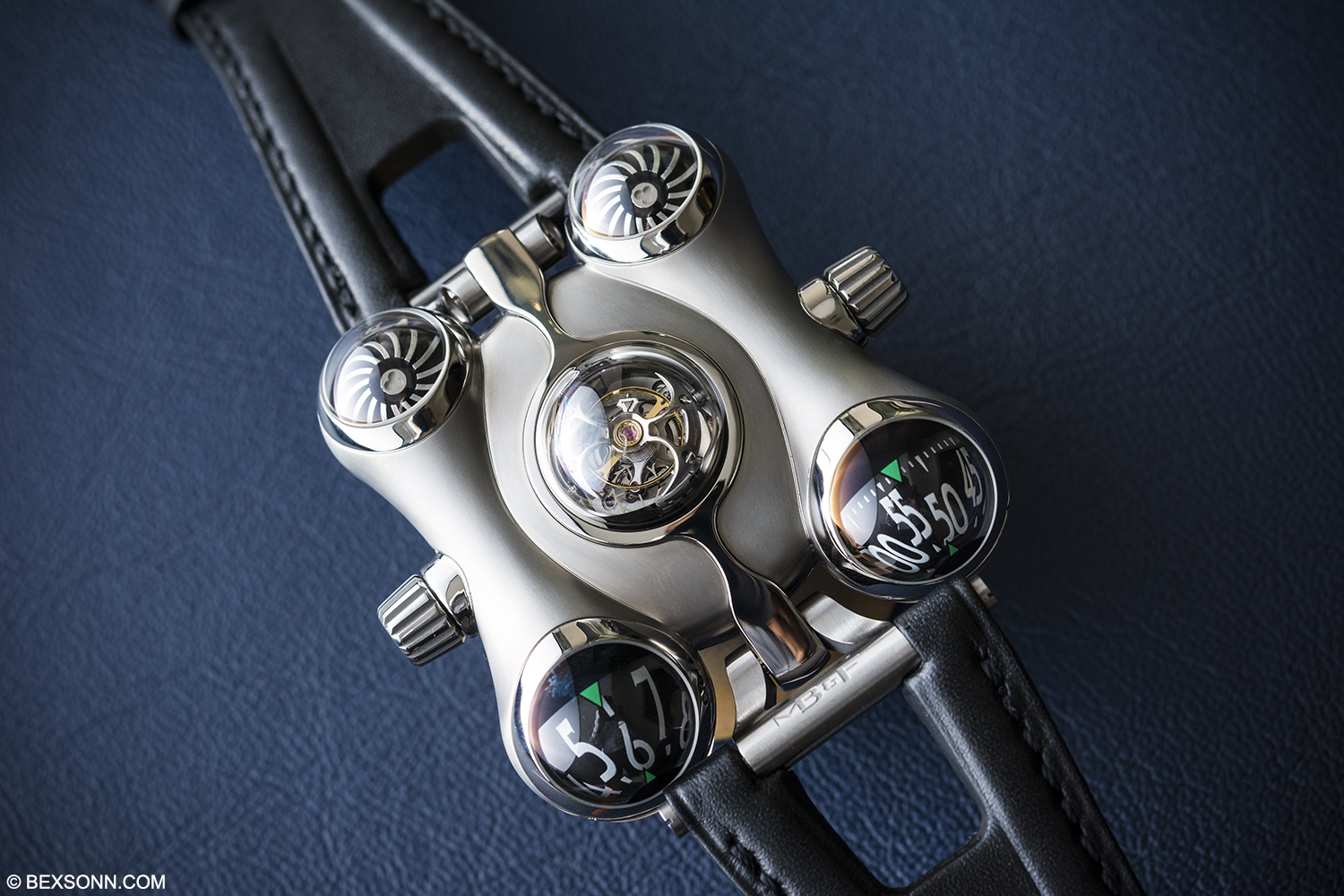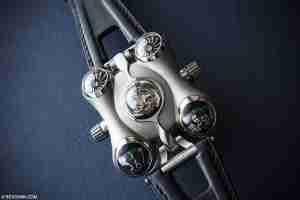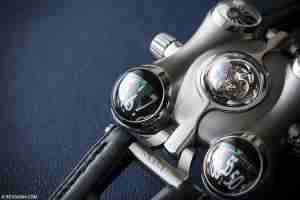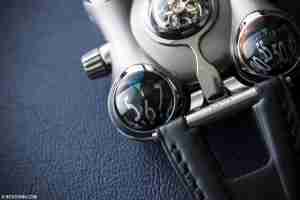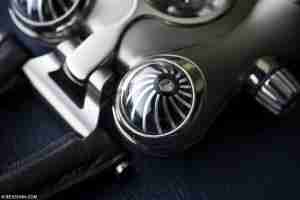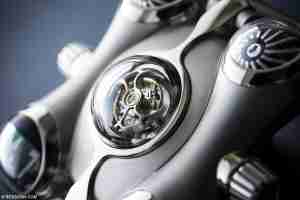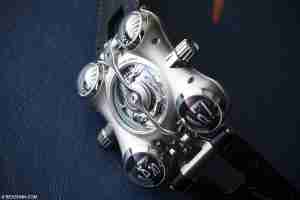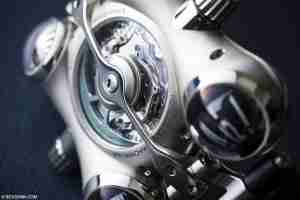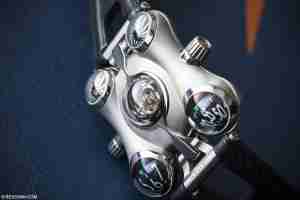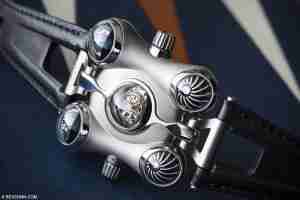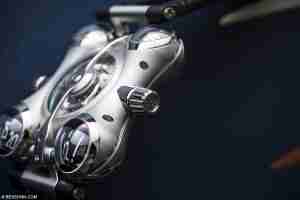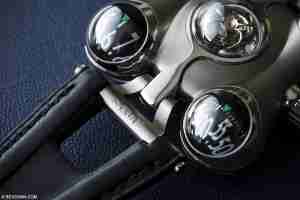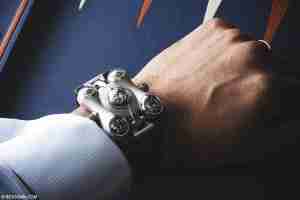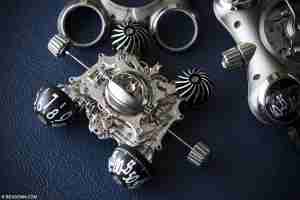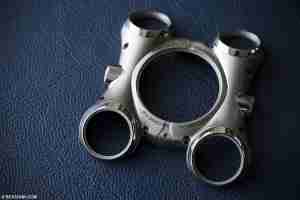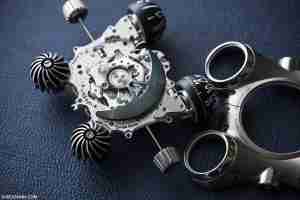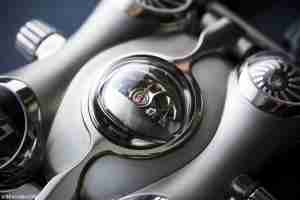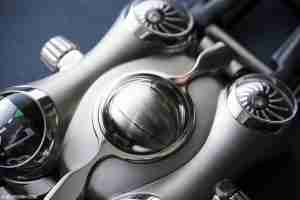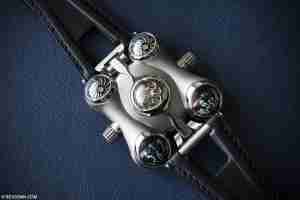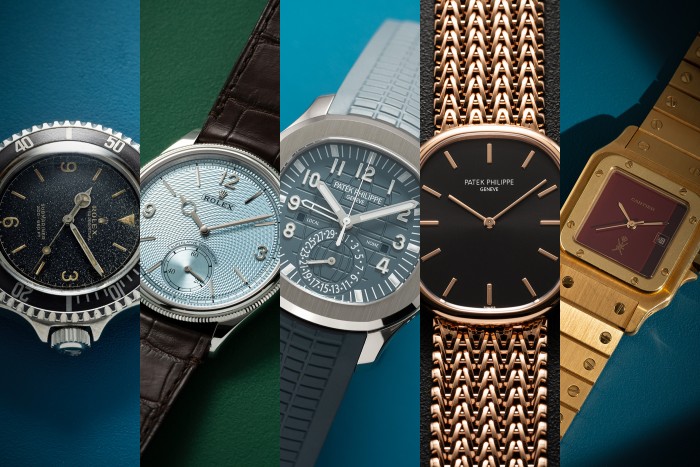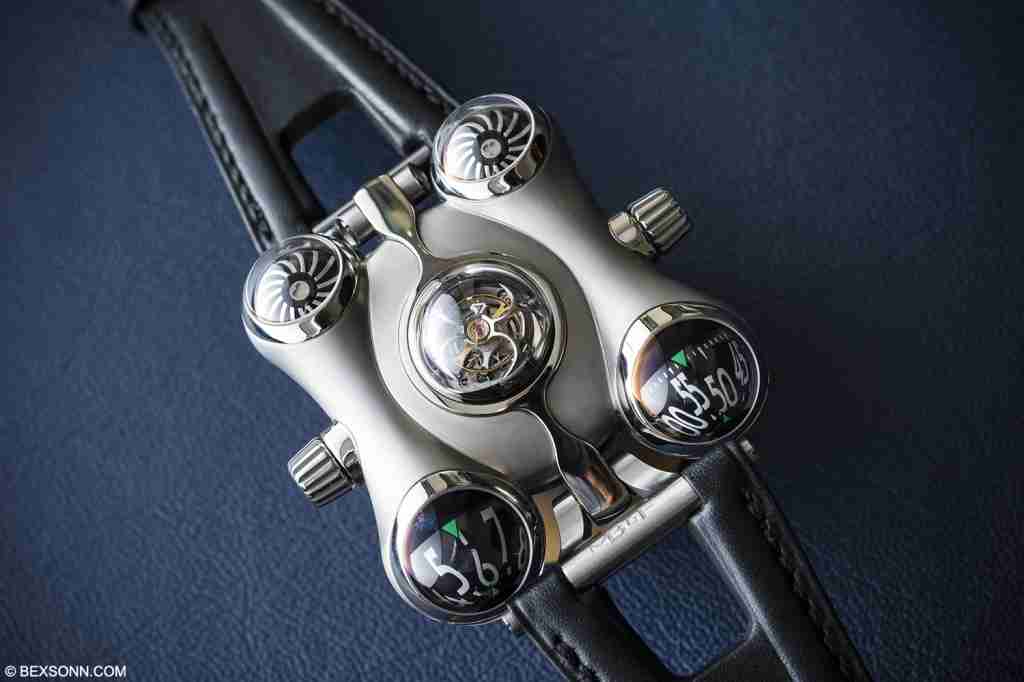 MB&F HM6 Space Pirate: Max Busser and Friends have kept us waiting for this latest instalment of the Horological Machine for a little while but without further a due, it was introduced last week Tuesday. So on the Thursday before we made our way to Salon QP, we stopped off at Marcus Watches to inspect the new Horological Machine N°6. Max hasn’t disappointed us in the slightest and for the first time in a Horological Machine since the HM1, MB&F have decided to include a tourbillon, the new HM6 really does appear to be truly out of this world.
MB&F HM6 Space Pirate: Max Busser and Friends have kept us waiting for this latest instalment of the Horological Machine for a little while but without further a due, it was introduced last week Tuesday. So on the Thursday before we made our way to Salon QP, we stopped off at Marcus Watches to inspect the new Horological Machine N°6. Max hasn’t disappointed us in the slightest and for the first time in a Horological Machine since the HM1, MB&F have decided to include a tourbillon, the new HM6 really does appear to be truly out of this world.
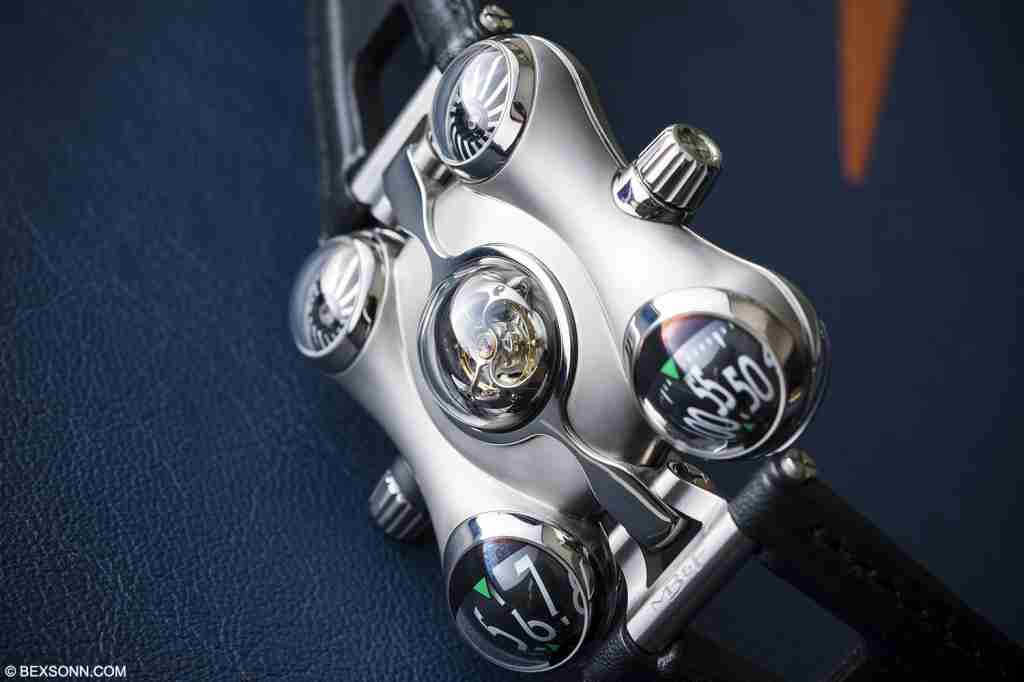 Like earlier Horological Machines that Max has designed in the past, there is always a theme and this latest addition to the family is no different. Though one might say the HM6 probably incorporates some of the past horological machines attributes. Such as the domed dials that are akin to the HM3 Frog and MOONMACHINE, or as mentioned above the centralised tourbillon from the HM1. Though it would appear Max has taken a bit of inspiration from previous machines, the actual inspiration for the HM6 Space Pirate came from a Japanese anime TV series from Maximilian Büsser’s childhood: Capitaine Flam (Captain Future in English). Capitaine Flam had a spaceship called the Comet that consisted of two spheres joined by a connecting tube. Büsser imagined combining two such crafts and the seeds of Space Pirate were planted.
Like earlier Horological Machines that Max has designed in the past, there is always a theme and this latest addition to the family is no different. Though one might say the HM6 probably incorporates some of the past horological machines attributes. Such as the domed dials that are akin to the HM3 Frog and MOONMACHINE, or as mentioned above the centralised tourbillon from the HM1. Though it would appear Max has taken a bit of inspiration from previous machines, the actual inspiration for the HM6 Space Pirate came from a Japanese anime TV series from Maximilian Büsser’s childhood: Capitaine Flam (Captain Future in English). Capitaine Flam had a spaceship called the Comet that consisted of two spheres joined by a connecting tube. Büsser imagined combining two such crafts and the seeds of Space Pirate were planted.
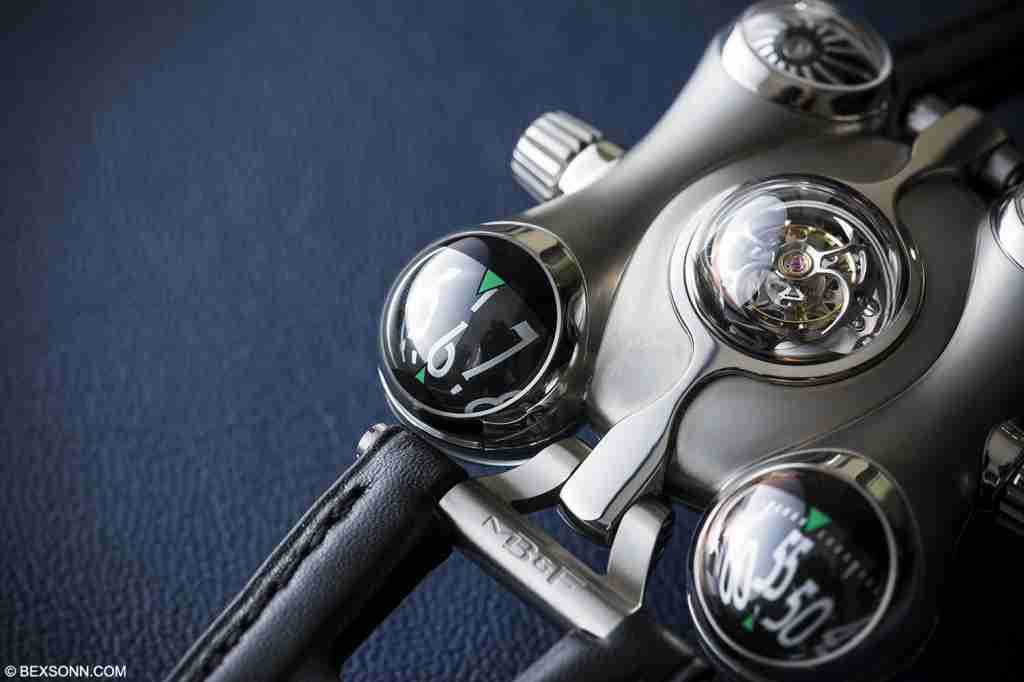 Undoubtedly the eye-catching feature is the curvaceous case of the new HM6, we can’t help but focus on the movement that in all honesty makes this piece of haute horlogerie possible. The movement of the HM6 had been under development for over three years due to some of the complications that had to first be overcome. The aluminum domed hour and minutes indicators are milled from a solid block to paper-like thinness and revolve on ruby bearings.
Undoubtedly the eye-catching feature is the curvaceous case of the new HM6, we can’t help but focus on the movement that in all honesty makes this piece of haute horlogerie possible. The movement of the HM6 had been under development for over three years due to some of the complications that had to first be overcome. The aluminum domed hour and minutes indicators are milled from a solid block to paper-like thinness and revolve on ruby bearings.
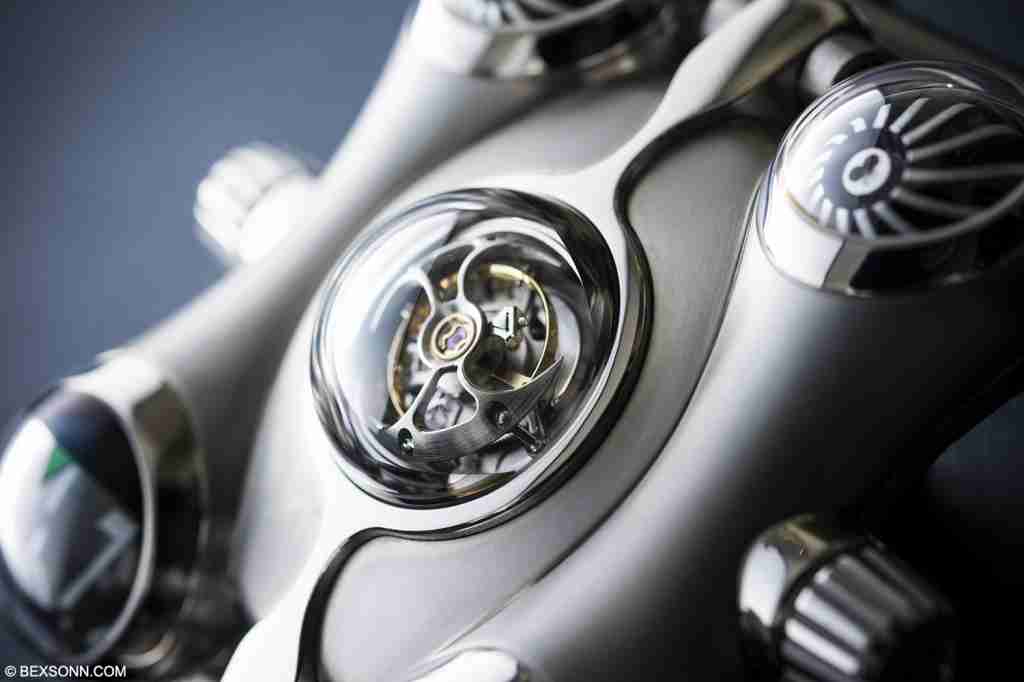 At the centre is the flying tourbillon perched high above the movement that has been designed by MB&F specifically for the HM6. While most tourbillons these days are more superfluous than functional, in the case of the HM6 it is a necessity. The choice of a standard balance wheel regulator was restricted due to the space under the top of the sapphire crystal, which couldn’t accommodate an upper supporting bridge. As an added preservation the flying tourbillon is protected from UV radiation (as this speeds up oxidation of lubricating olis) by a retractable spherical shield that covers the tourbillon with six overlapping, curved blades. These blades are operated by a crown on the left side of the case. But what was quite interesting to learn speaking to Charris, was that the blades are all individually shape and no two blades – that have been machined from a solid block of titanium – are the same.
At the centre is the flying tourbillon perched high above the movement that has been designed by MB&F specifically for the HM6. While most tourbillons these days are more superfluous than functional, in the case of the HM6 it is a necessity. The choice of a standard balance wheel regulator was restricted due to the space under the top of the sapphire crystal, which couldn’t accommodate an upper supporting bridge. As an added preservation the flying tourbillon is protected from UV radiation (as this speeds up oxidation of lubricating olis) by a retractable spherical shield that covers the tourbillon with six overlapping, curved blades. These blades are operated by a crown on the left side of the case. But what was quite interesting to learn speaking to Charris, was that the blades are all individually shape and no two blades – that have been machined from a solid block of titanium – are the same.
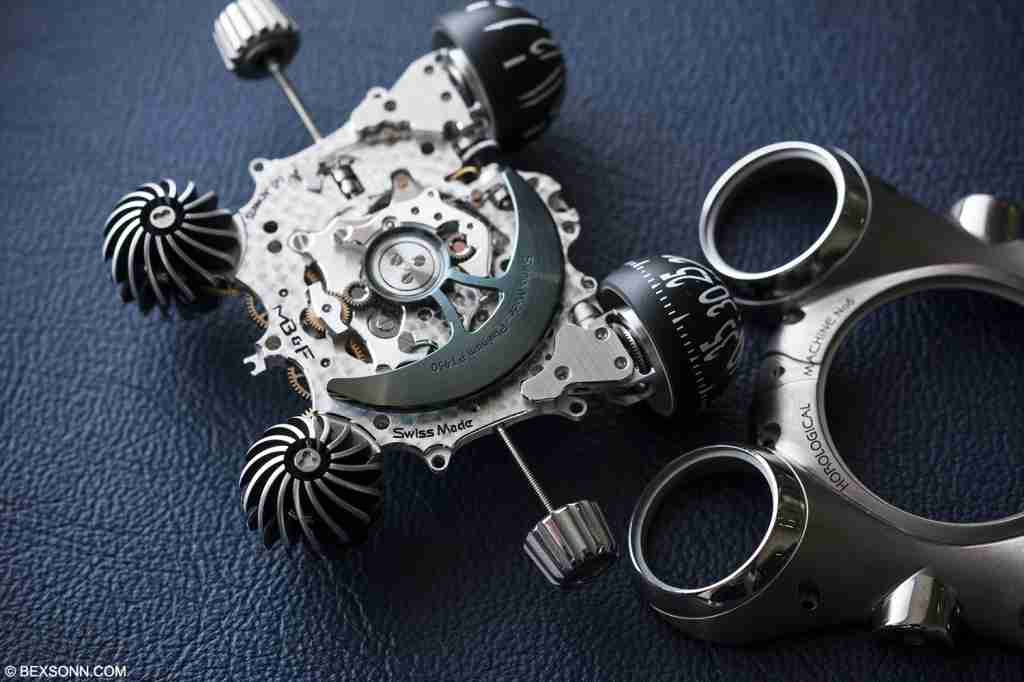 Opposite the hour and minutes indicators are two turbines that again serve a much more sophisticated purpose than just an aesthetical auxiliary. You see, these two spherical turbines that are machined from a solid block of aluminum into two hemispheres are driven by the automatic winding rotar by a gear train designed to amplify the number of rotations. However, if the winding starts rotating too quickly – most likely due to highly active movement of the wrist – air friction on the turbines increases and helps counteract the excessive speed to minimise wear.
Opposite the hour and minutes indicators are two turbines that again serve a much more sophisticated purpose than just an aesthetical auxiliary. You see, these two spherical turbines that are machined from a solid block of aluminum into two hemispheres are driven by the automatic winding rotar by a gear train designed to amplify the number of rotations. However, if the winding starts rotating too quickly – most likely due to highly active movement of the wrist – air friction on the turbines increases and helps counteract the excessive speed to minimise wear.
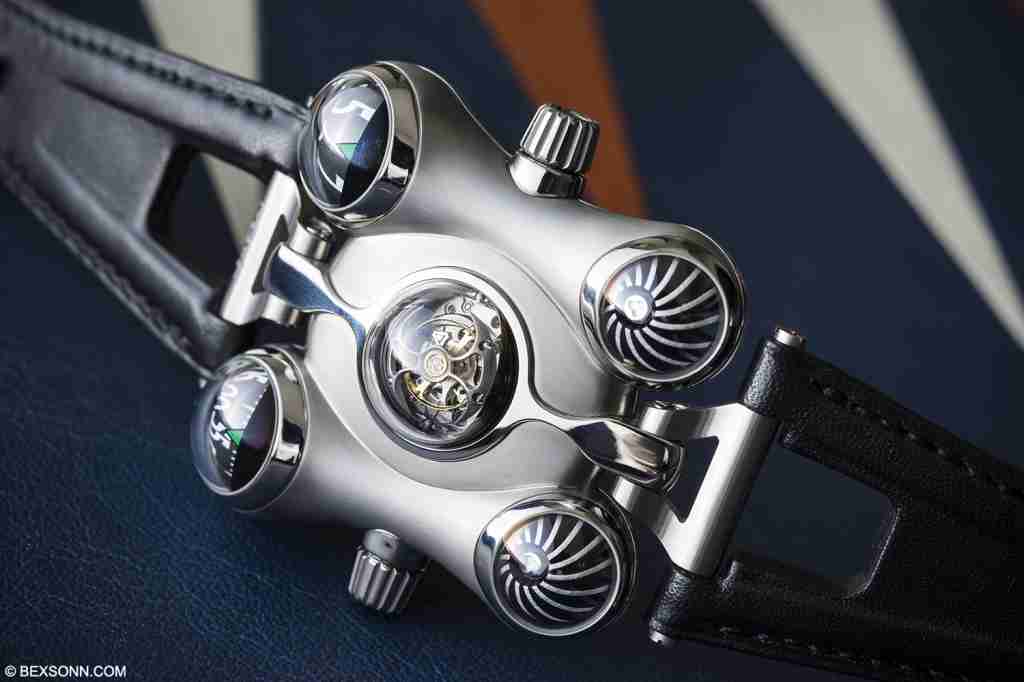 The undulating curves of the Horological Machine N°6 case derives from an early 20th century art movement labelled “biomorphism”, in which art is modelled on the naturally occurring shapes and forms found in nature and living creatures. The case of the HM6 is machined from two solid blocks of aerospace grade 5 titanium, polishing and applying a satin finish to the intricate curves requires over 100 hours of work.
The undulating curves of the Horological Machine N°6 case derives from an early 20th century art movement labelled “biomorphism”, in which art is modelled on the naturally occurring shapes and forms found in nature and living creatures. The case of the HM6 is machined from two solid blocks of aerospace grade 5 titanium, polishing and applying a satin finish to the intricate curves requires over 100 hours of work.
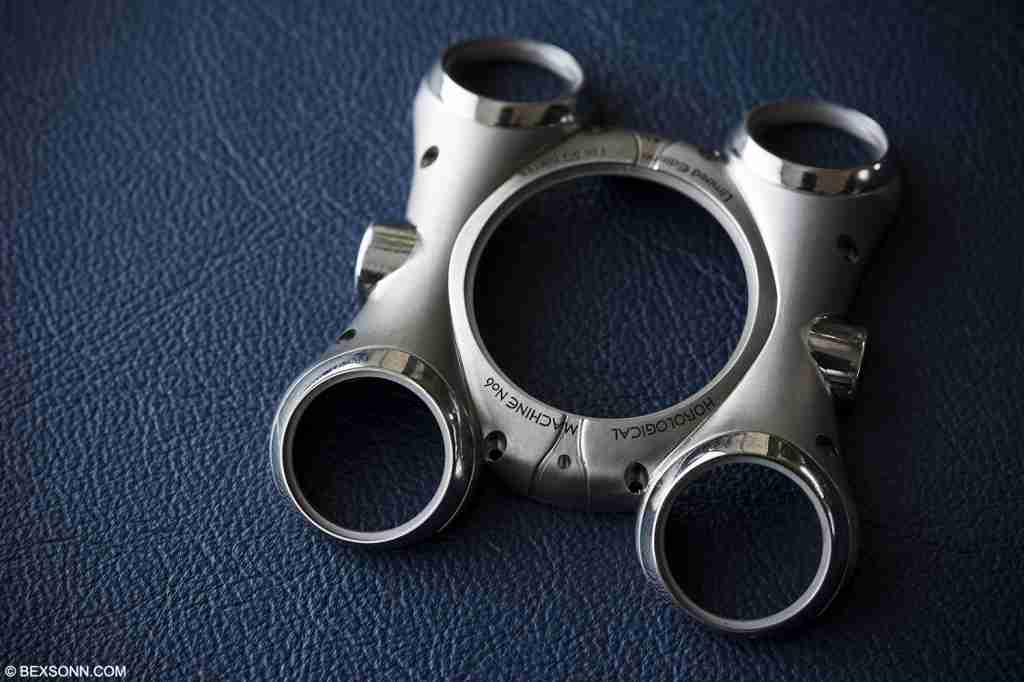 Joining these two machined individual titanium case pieces together is a titanium band, which wraps lengthways around the case with a circular aperture on top circumventing the central dome. On the back, the flat band is fixed to a metal disc in the centre of the display back crystal. This titanium band adds rigidity to the case and also supports the articulated lugs, which pivot to enable the strap to fit snugly around the wrist. Completing the case of the HM6 are no less than 10 sapphire crystals, with the larger majority domed. Each dome is first machined from a solid block of sapphire crystal, once machined each dome is then perfectly formed using diamond tipped tools.
Joining these two machined individual titanium case pieces together is a titanium band, which wraps lengthways around the case with a circular aperture on top circumventing the central dome. On the back, the flat band is fixed to a metal disc in the centre of the display back crystal. This titanium band adds rigidity to the case and also supports the articulated lugs, which pivot to enable the strap to fit snugly around the wrist. Completing the case of the HM6 are no less than 10 sapphire crystals, with the larger majority domed. Each dome is first machined from a solid block of sapphire crystal, once machined each dome is then perfectly formed using diamond tipped tools.
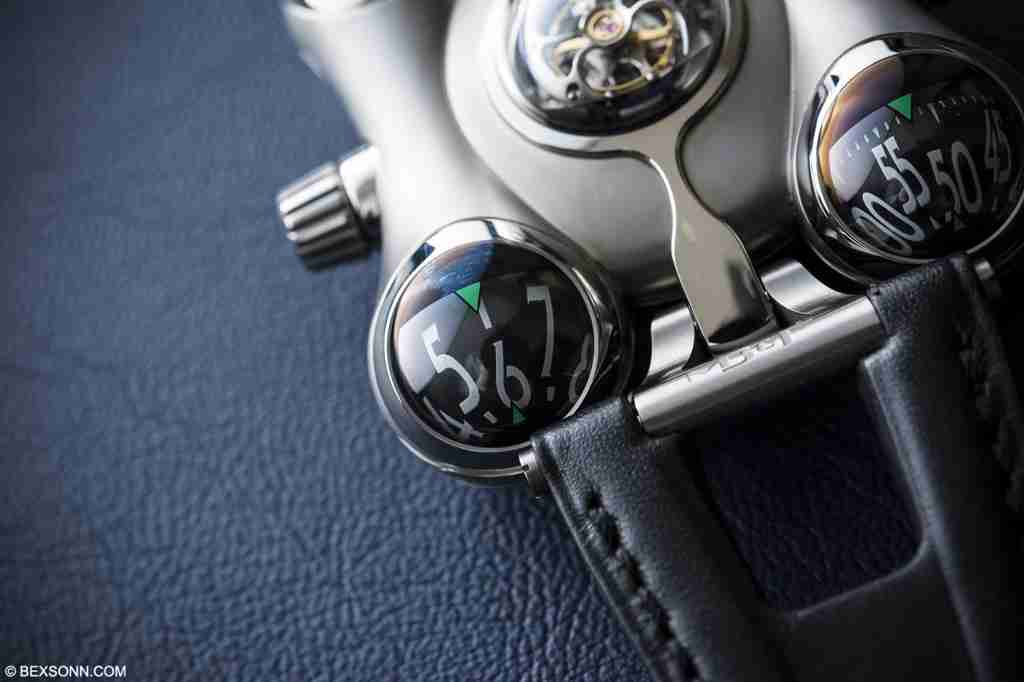 When introduced, admittedly I thought it looked a little large but after trying it on I was very surprised. It was very light and a lot smaller than first anticipated. The pivoting lugs really does make a difference and makes the HM6 very comfortable to wear. While the new HM6 may not be everybody’s cup of tea I do indeed believe this is the exact point to the timepieces that Maximilian Büsser and Friends make. They create a piece of art and inevitably make it tell the time.
When introduced, admittedly I thought it looked a little large but after trying it on I was very surprised. It was very light and a lot smaller than first anticipated. The pivoting lugs really does make a difference and makes the HM6 very comfortable to wear. While the new HM6 may not be everybody’s cup of tea I do indeed believe this is the exact point to the timepieces that Maximilian Büsser and Friends make. They create a piece of art and inevitably make it tell the time.
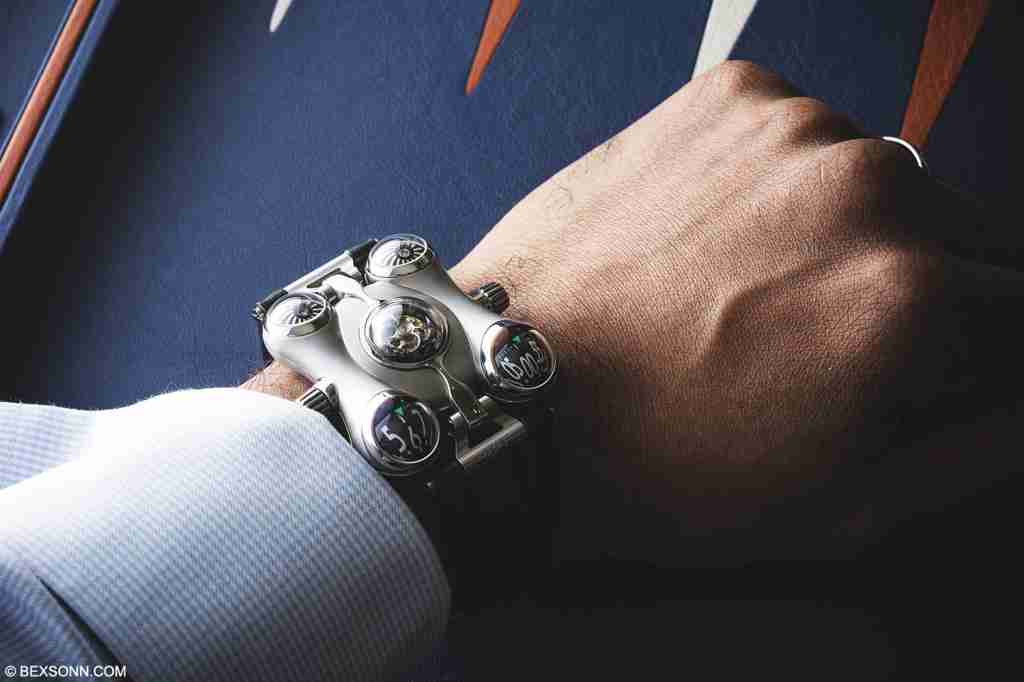 The new Horological Machine N°6 is limited to 50 pieces and retails at £169,500. It is available to purchase from MB&F selected outlets such as Marcus Watches. For more information on this piece of Haute Horlogerie visit the official MB&F website.
The new Horological Machine N°6 is limited to 50 pieces and retails at £169,500. It is available to purchase from MB&F selected outlets such as Marcus Watches. For more information on this piece of Haute Horlogerie visit the official MB&F website.
